More than 100 Years Ago: ¡Hola! from the Johnson & Johnson Spanish Language Department
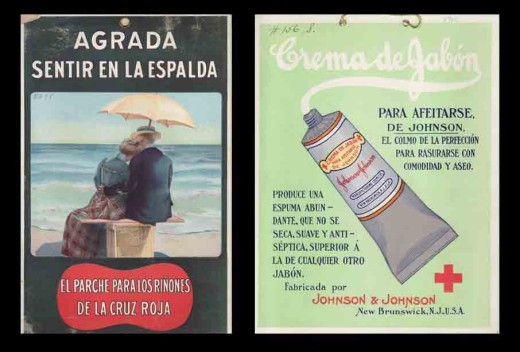
We think of multi-language advertising as a modern phenomenon, but in fact at some companies it goes back decades – sometimes more than a century. More than 100 years ago, Johnson & Johnson had an in-house Spanish-language advertising department that produced ads, correspondence and other materials for Latin America, the Spanish-speaking retail pharmacists who sold our products in the United States, and for Spanish speaking physicians. The earliest of these items date back to the late 1800s, shortly after we were founded.
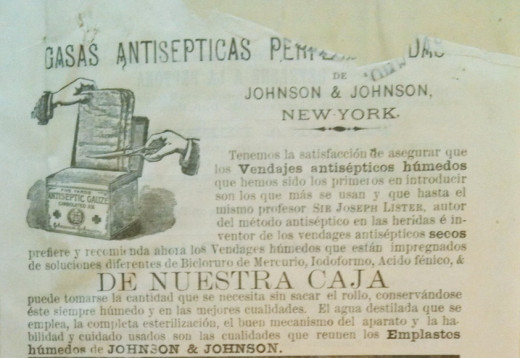
This very early undated ad for sterile surgical dressings and absorbent cotton shows some of our earliest packaging, from the first years that Johnson & Johnson was in business. The Antiseptic Gauze tin with the rare “double-J” logo places the ad in the first few years that Johnson & Johnson was in business –circa 1886 to 1889.
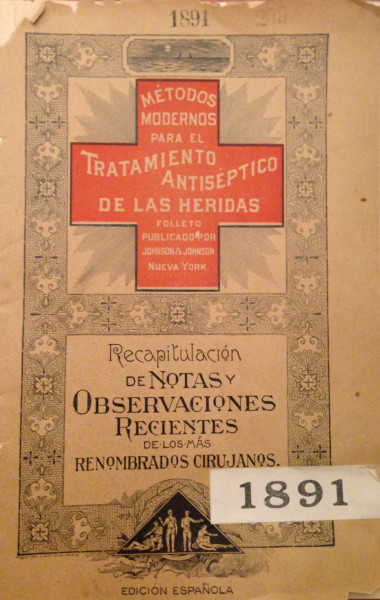
One of the first Johnson & Johnson publications to be translated into Spanish was the company’s groundbreaking sterile surgery manual, Modern Methods of Antiseptic Wound Treatment, published by Johnson & Johnson in 1888. The Spanish-language copy of Modern Methods in our archives dates from 1891. A decade or so later, we published a Spanish-language edition of The RED CROSS® Messenger, our publication for the retail pharmacists who sold our products.
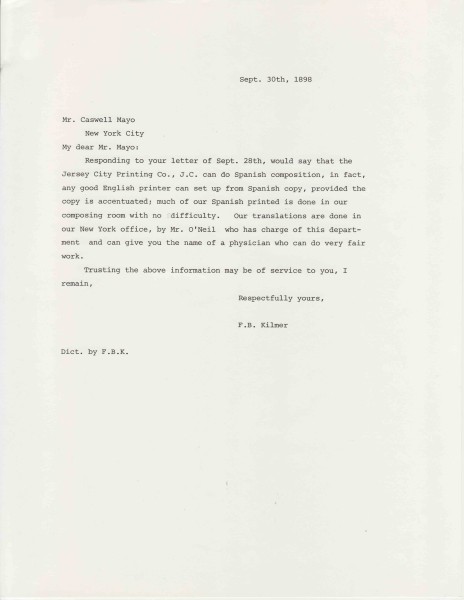
The Spanish language advertising that Johnson & Johnson was doing began to gain attention. In September of 1898, Caswell Mayo, the editor of American Druggist Magazine, wrote to Johnson & Johnson, inquiring about the company’s Spanish-language materials and seeking advice. Scientific Director Fred Kilmer wrote back to him to recommend a printer in Jersey City who could do Spanish-language composition. Kilmer mentioned that Johnson & Johnson did its own printing for its Spanish-language materials in its own composing room – which would have been part of the Company’s Advertising or Printing department. Kilmer wrote:
“…much of our Spanish printed [sic] is done in our composing room with no difficulty. Our translations are done in our New York office, by Mr. O’Neill who has charge of this department…” [Letter from F.B. Kilmer to Mr. Caswell Mayo, Sept. 30, 1898, Johnson & Johnson archives.]
The letter mentioned that the New York office could recommend a physician who could do the translations.
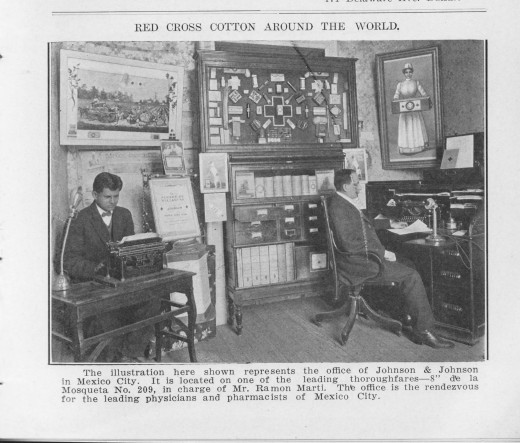
By 1916 – with the steady robust growth of the company’s business, and in an era of large-scale immigration to the United States -- the Johnson & Johnson Spanish Language Department had grown extensively. It was located on the second floor of the Johnson & Johnson offices in New Brunswick. “The Spanish sales department, which handles the South American trade, is especially extensive.” [RED CROSS Messenger, Vol. VIII, March 1916, Nos. 9 & 10, p. 490, “Four Floors of Brains and Energy.”] The department was close to the company’s mailroom, which made it extremely convenient to send out correspondence and product samples.
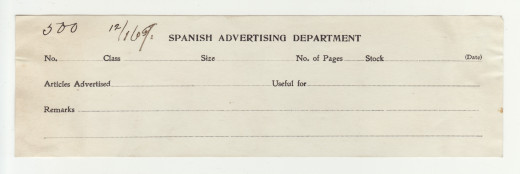
Believe it or not, Johnson & Johnson kept track of its Latin American sales – and all of its sales – in 1916 with a “computing machine,” or mechanical bookkeeping machine. It was the same type of machine used to tabulate the United States census, and it used punch cards. That forerunner of the computer wasn’t the only cool bit of technology in the Johnson & Johnson office in 1916 – the company also used early automatic typewriters that could type standardized, repetitive text by themselves -- a visiting pharmacist likened them to player pianos! [RED CROSS Messenger, Vol. VIII, March 1916, Nos. 9 & 10, p. 490, “Four Floors of Brains and Energy.”] Johnson & Johnson was an early adopter of a variety of technologies. Aside from improving business capability and efficiency, it is also likely that then-company president James Wood Johnson, an engineer, found these innovations to be incredibly cool.
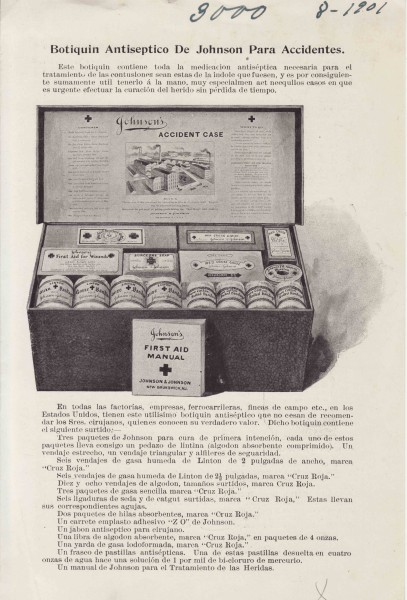
Johnson & Johnson pioneered the first commercial First Aid Kits in 1888 and, by 1901, we were advertising the general (non-railroad-specific) First Aid Accident Case in Spanish. Shortly after that, the company began producing a series of colorful ads and collectable souvenir cards for the Latin American market. The cards had beautifully detailed illustrations of children on the front, and advertising for our products on the back.
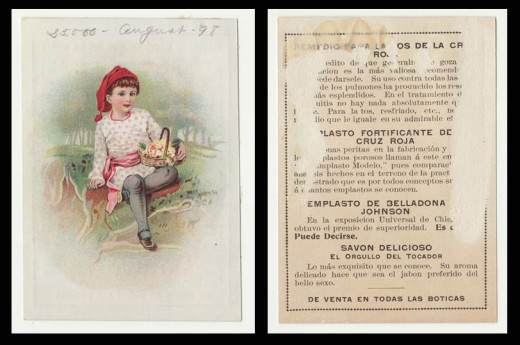
By the early 1900s, if we advertised a product, we also advertised it in Spanish. Sterile surgical dressings? Yes. JOHNSON’S® Baby Powder? Without a doubt! Kidney Plasters, with our famous Feels Good on the Back ad? Of course. JOHNSON’S® Shaving Cream Soap? Absolutely!
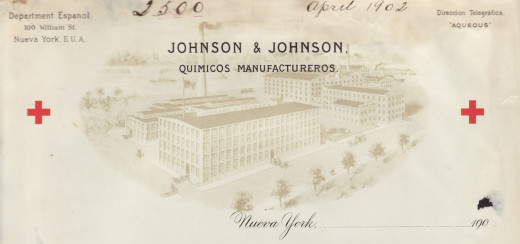
We had company letterhead in Spanish, as well as product order forms. And a Happy New Year card from Johnson & Johnson that was sent to the company’s Spanish-speaking customers in appreciation of their business. And speaking of sales…
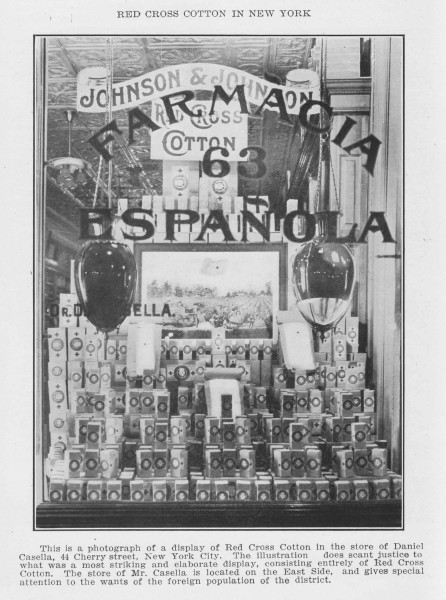
As early as 1908, Johnson & Johnson had a number of employees of Hispanic heritage in the company’s sales force. Since we had strong sales in Latin America and we had Spanish-speaking retail customers in the United States, it made sense to have members of our sales force reflect that: the 1908 listings of Travelers, as salesmen were called in that era, included Manuel Royo, Luis Ortiz, Alberto Ditz Guerra and J. Jimenez. A 1917 listing of the sales force included Louis Ortiz, Andres Del Valle, Joaquin Garcia, Ernesto G. Ealo, P.M. Rodriguez, and C. G. De Quevedo. During the 1910s, Johnson & Johnson advertised in the United States in around 15 languages in order to reach its new customers – the more than 15 million immigrants who had come to the U.S. between 1900 and 1915. It was an early recognition that the company needed to meet its customers where they were and to communicate with them in a way that would reach them. Our early Spanish Language Department was part of that effort – a very early example of the ways in which Johnson & Johnson fulfilled its responsibilities to the medical profession, to the people who use our products, and to our retail partners.
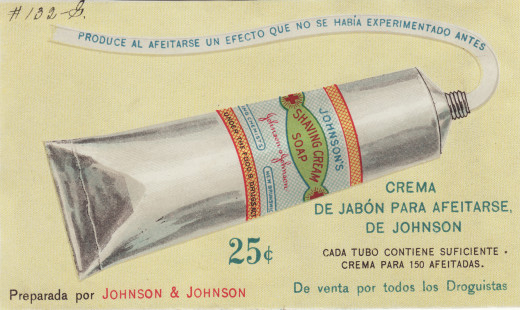

Such cool piece of history! So great to learn about the Hispanic heritage at J&J. Thanks Margaret for the story!